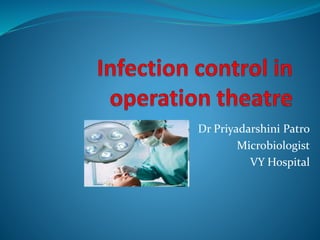This document provides guidelines for maintaining a sterile environment in an operating theatre (OT) to prevent surgical site infections. It outlines policies for OT staff dress code and conduct, including proper hand hygiene and restricting access. The OT layout separates zones by sterility. Cleaning procedures are described for daily cleaning between surgeries, deep weekly cleaning, and handling soiled equipment and laundry. Standard infection control precautions like proper disinfectant use and spills management are also covered.















































